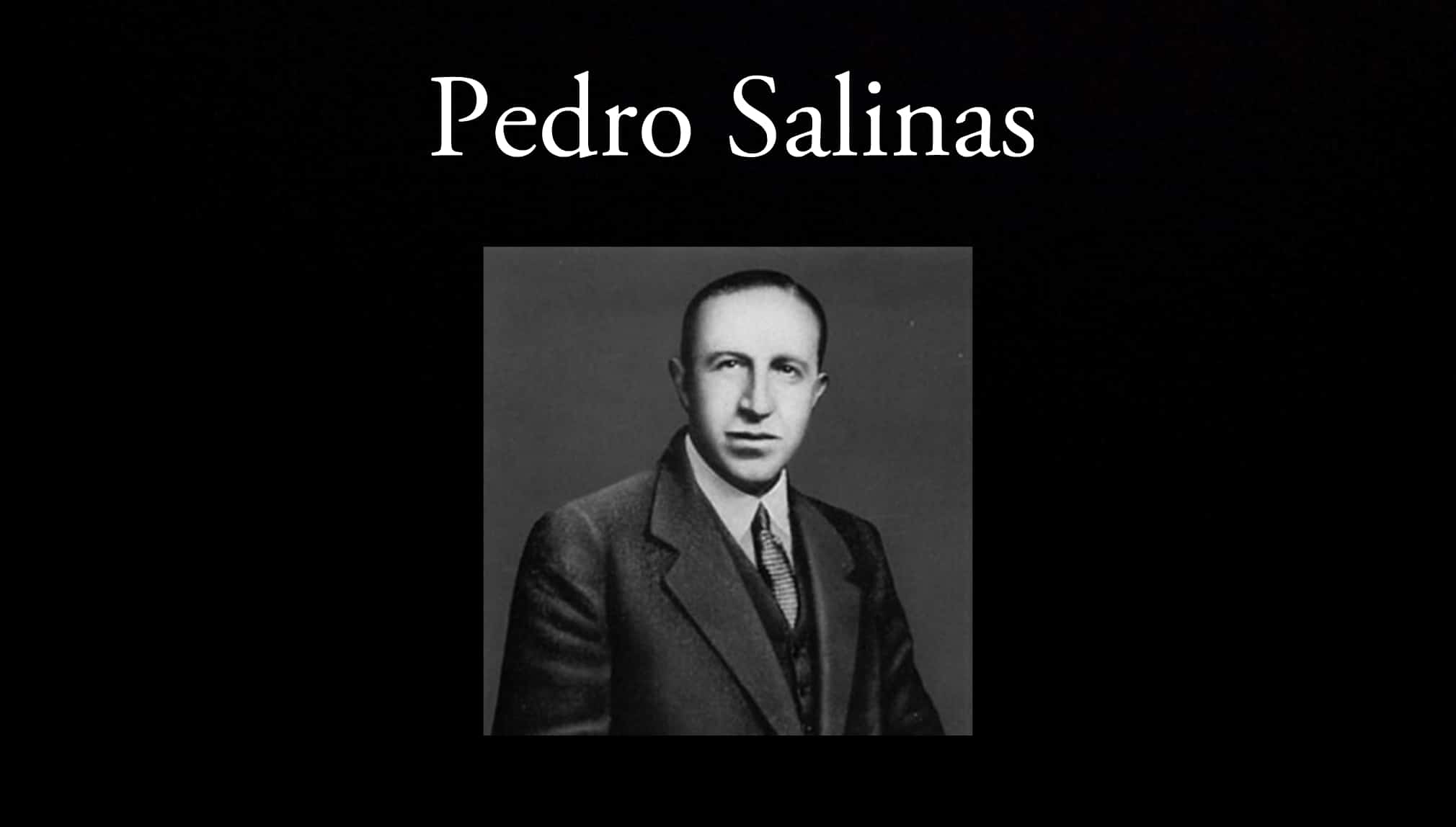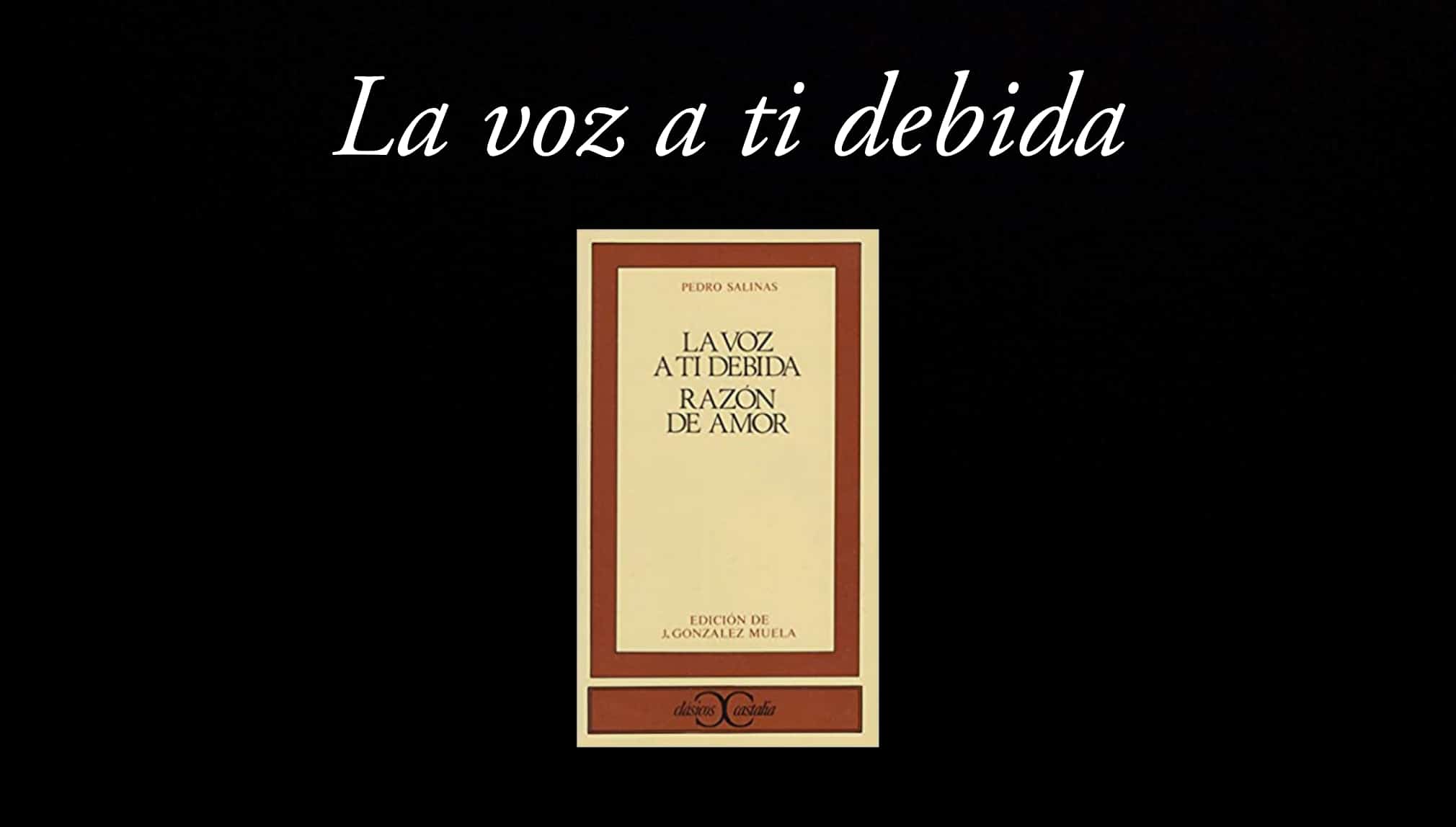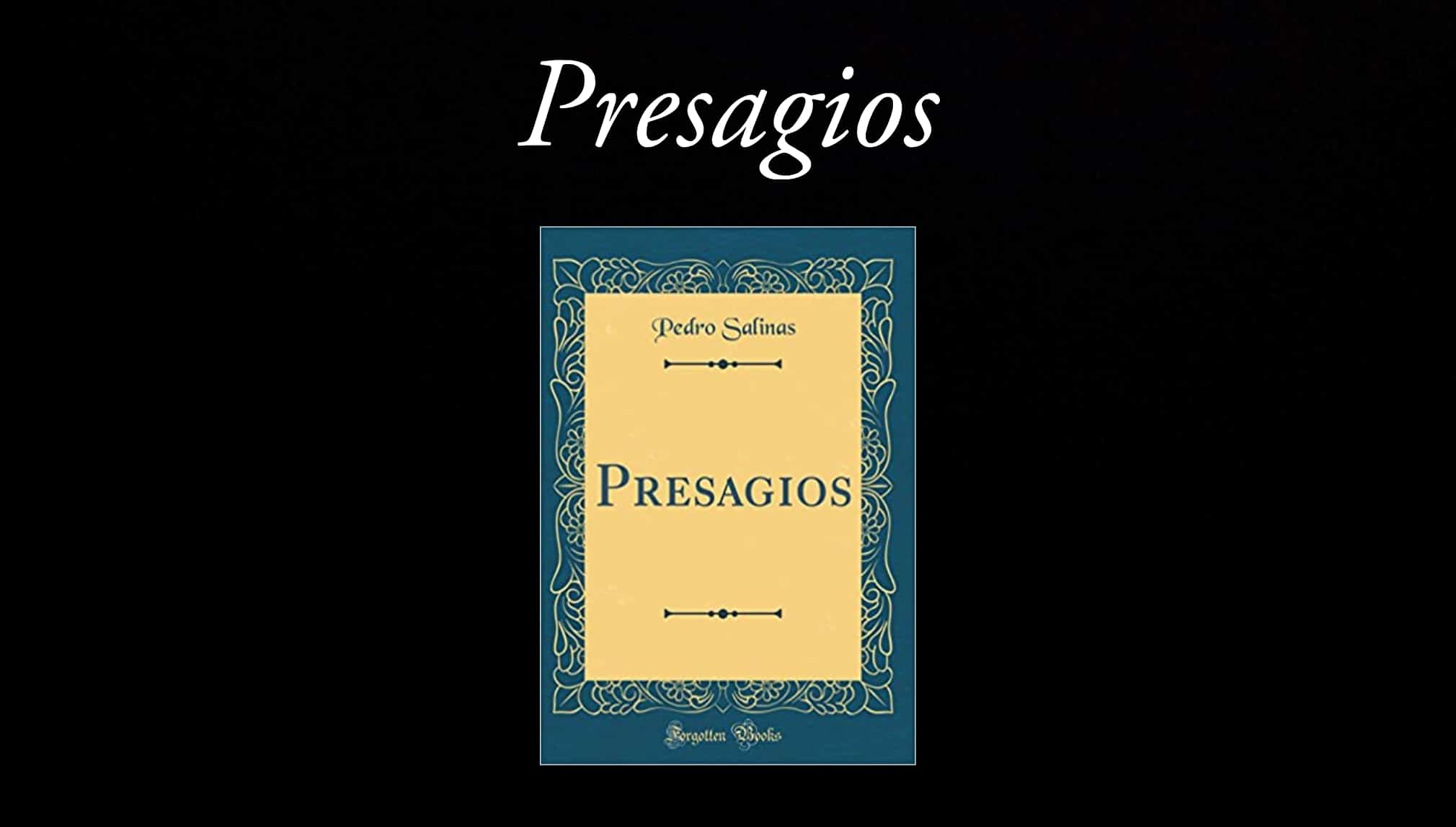
Peter Saltines.
Pedro Salinas is considered one of the best authors of the XNUMXth century, and a great representative of Castilian prose. His work is recognized as insightful and, at the same time, subtle. The writer was a man of letters and evolution, in all aspects.
He himself said of himself and his work: “I value poetry, above all, authenticity. Then the beauty. Later, the ingenuity ». Most of the texts in this famous Spanish poet they are dedicated to romance, from a general perspective and with an avant-garde spark.
Biographical profile
Birth and childhood
Pedro Salinas Serrano was born in Madrid, Spain, on November 27, 1891. Fruit of the marriage between Soledad Serrano Fernández and Pedro Salinas Elmos. The latter worked as a merchant until his death in 1897. At that time, the future writer was only six years old.
After the death of his father, Institutions such as the Hispano-Francés College and the San Isidro Institute in Madrid constituted the main bases of the academic training of Salinas to break through to the university world. Later, Pedro enrolled at the University of Madrid, where he began to study law.
After two years, he abandoned laws to enter the passion of philosophy and letters. This career led him later, in 1917, to obtain a doctorate. He succeeded with a thesis on the illustrations of Don Quijote of La Mancha, of Miguel de Cervantes.
the poet of love
Recognized by many as "The poet of love", this famous writer cemented his career and literary works in the depth and subtlety of that great feeling that he kept. It should be noted that the romance that Pedro describes in his books is not always happy and perfect.
Salinas found a way to include how unpleasant and painful love can be, but in a masterful way. In the same way, he integrated personal reflections regarding the separation and the feeling of loss.
His life, a love story
By 1915, in Algeria, he married Margarita Bonmatí. Salinas was only 24 years old at the time. They resided mainly in Paris. Years later, in 1917, they settled in Spain. They had two children: Soledad and Jaime Salinas. The marriage remained intact and happy until the summer of 1932.
With the creation of the Santander Summer University, in which he was involved, Pedro Salinas focused his eyes on an American student named Katherine R. Whitmore. Madly in love with her and in her honor, he inspired the poetic trilogy: The voice due to you (1933) Love reason (1938) and Long regret (1939)
The romance was preserved even when Katherine returned to her native country. But, for the academic period of 1934-1935, Margarita —Pedro's wife— found out about the clandestine relationship and attempted suicide. As a result of this, Katherine promoted the total rupture of her relationship with Salinas.

Phrase by Pedro Salinas.
a dramatic ending
The Spanish Civil War was the reason that ended up distancing both lovers. After the coup, Salinas went to France and later went into exile in the United States. By 1939, Katherine married Brewer Whitmore and adopted his last name. However, he died after four years in a car accident.
Apparently, the relationship between Katherine and Pedro occasionally remained, but eventually faded. Their last meeting was in 1951. A few months later, on December 4, the poet died in Boston, Massachusetts. His body was buried in the capital of Puerto Rico, San Juan.
Later, in 1982, Katherine also passed away. But, not without first authorizing the Letters between her and Salinas was published. As long as his last wishes were fulfilled: that it be twenty years after his death and that his letters were omitted.
27 Generation
Undoubtedly, Pedro Salinas is considered one of the greatest poets of the 27th century and a representative of the so-called Generation of XNUMX. This movement became known culturally in that year and emerged as a relay of noucentismo. The writer was accompanied by authors of the stature of Rafael Alberti, Federico Garcia Lorca and Damaso Alonso.
Unlike previous currents, the Generation of '27 used different forms of literature. Among these, the following stand out: neopopularism, Hispanic philology —a prominent area of Salinas—, surrealist poetry and homoeroticism.
Analysis of his works
As a profound humanist and scholar, the best known works of Pedro Salinas Serrano are his prodigious works as a poet and essayist. However, one cannot fail to mention his other occupations. Like, for example, that of prose writer, a genre from which three of his best titles came out.
Salinas also worked as a playwright between 1936 and 1947, creating a total of fourteen plays. He was also the translator of the French novelist Proust, who managed to catapult his novels in the Spanish-speaking world through him.
humanistic style
This poet-troubadour defined poetry as: «An adventure towards the absolute. You get more or less close, you go more or less way: that's all ». For him, poetry was, first hand, authenticity, followed by beauty and wit, selecting in his books as the best option short verses reluctant to rhyme.

The voice due to you, by Pedro Salinas.
On the other hand, critics and colleagues from the literary environment have defined Salinas's work as an attempt to defend himself against the values of European culture prior to World War II. His love and humanitarian character led him to inquire and write about the gloomy side of things.
For Leo Spitzer, the Austrian stylistic genius and expert on Romance languages, Salinas's poetry always conceived the same characteristic: its own concept. All his work has something of himself. The way in which the author expresses it is through paradox and eloquence.
Three poetic stages
His beginning in the literary world begins chronologically in 1911 with his first poems called "creepy." These were published by Ramón Gómez de la Serna in his magazine Prometheus. However, His consolidation as a subjective poet with a loving tradition became known through three poetic stages.
A great evolution is observed in each of these stages. This was not only due to the content of the works, but also to the attitudes of the poet himself. His lyrics were always influenced by his life experiences. Furthermore, Salinas often found inspiration in his own personal growth.
The second stage stands out especially. The titles produced at that time, in addition to enriching all his work, were the most renowned at the time.
First stage
The first stage covers from 1923 to 1932. Salinas, then, was a young man who was just beginning to adopt a fine style where the affectionate theme was the protagonist. The path during this period was illuminated by the poetry of Rubén Darío - Nicaraguan writer - and the authors of Spanish origin: Juan Ramón Jiménez and Miguel Unamuno.
Omens (1923) random insurance (1929) and fable and sign (1931) were the product of this stage. The author's goal was to make his poetry as perfect as possible. This cycle was a kind of preparation for his second stage known as: fullness.
Second stage
During this stage, which goes from 1933 to 1939, the poet Salinas takes a charming and surprising turn by writing a love trilogy. The voice due to you (1933) was the first of the titles. This work narrates completely, from beginning to end and in a meticulous way, an intense love affair.
He then appeared Love reason (1936) In it, Salinas captures love from its most painful point of view. She emphasizes how hard a breakup can be and the suffering that remains after the separation. Phrases like: "You will be, love, a long goodbye that does not end" are epic in this book.
As a closure, it appears Long regret (1939) —remembering Gustavo Adolfo Bécquer—. This work also follows the same breakthrough course described in the other books. The stage is called fullness because it coincides with his season of love with Katherine Withmore.

Omens, by Pedro Salinas.
Third stage
From this period, between 1940 and 1951, Salinas developed poems inspired by the sea of the Puerto Rican island. Such is the case of: The contemplated (1946). The work arises Everything clearer and other poems (1949) —title that emphasizes the power of creating through the word.
Another representative poem of this stage is "Trust" (1955). In this, the author boasts of the happy and energetic affirmation of the lived reality. It should be noted that it was a title published in 1955, after his death.
Complete list of his books
Poetry
- random sure. (West Magazine, 1929)
- Fable and sign. (Plutarch, 1931).
- The voice due to you. (Sign, 1933).
- Reason of love (Editions of the Tree, 1936).
- Miscalculation. (Imp. Miguel N, 1938).
- Long regret. (Publishing Alliance, 1939).
- Poetry together. (Losada, 1942).
- The contemplated. (New Forest, 1946).
- Everything clearer and other poems (South American, 1949).
- Trust (Aguilar, 1955).
Narrative
- Modernized version of the Cantar de Mio Cid. (Western Magazine, 1926).
- Eve of joy (West Magazine, 1926).
- The amazing bomb. (South American, 1950).
- The impeccable nude and other narratives (Tezontle, 1951).
- Full narratives. (Peninsula, 1998).
Test
- Spanish literature. Twentieth century. (1940).
- Jorge Manrique or tradition and originality. (1947).
- The poetry of Rubén Darío (1948).
- The responsibility of the writer. (Seix Barral, 1961).
- Complete essays. Edition: Salinas de Marichal. (Taurus, 1983).
- The defender (Editorial Alliance, 2002).
Letters
- Love letters to Margarita (1912–1915). Editorial Alliance, 1986
- Letters to Katherine Whitmore. Tusquets, 2002.
- Salinas, Pedro. (1988 a). Letters to Jorge Guillén. Christopher Maurer, ed. García Lorca Foundation Newsletter, n.3, p. 34-37.
- Eight unpublished letters to Federico García Lorca. Christopher Maurer (ed.) Bulletin of the García Lorca Foundation, no. 3, (1988); p. 11-21.
- Letters from Pedro Salinas to Guillermo de Torre. Renaissance, no. 4, (1990) p. 3-9.
- Eight letters from Pedro Salinas. Enric Bou (ed.) Western Magazine, n.126, nov. (1991); p. 25-43.
- Salinas/Jorge Guillén correspondence (1923-1951). Edition, introduction and notes by Andrés Soria Olmedo. Barcelona: Tusquets (1992).